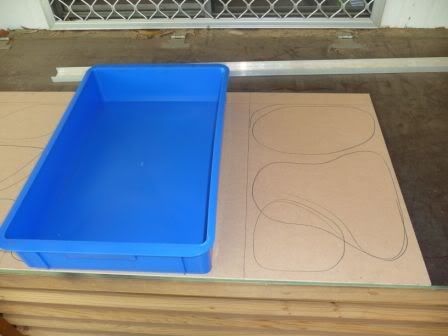
As you can see there is not much wasted space in the tub.

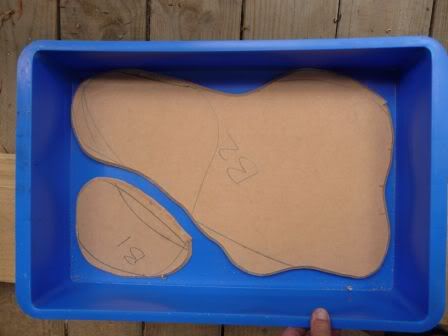
I cut them out with the jigsaw set at 45 degrees to save some sanding later. Left is the 45 but I like to sand that top edge (top half) to blend the hill to the table better like on the right.
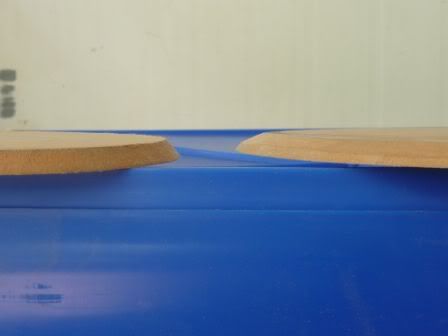
I'm using a sanding disc alot in my angle grinder these days and it is a great time saver.

The production line. You can chew a lot out quickly with the sanding disc and the right tools.
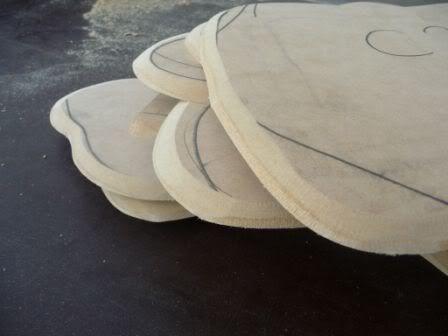
There are 20 hill bases in this tub!
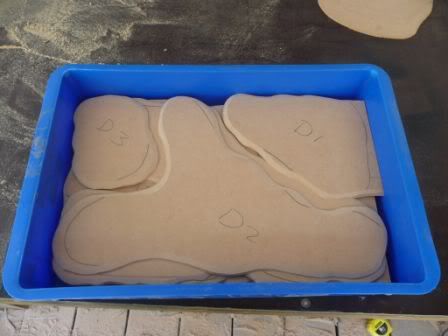
I'm using 25mm foam on top, just standard low density stuff. Once again it is what I have on hand. I'll use some plaster on it before the texture paint and they become pretty tuff. As you can see there is not much waste with this method either. High density foam is far better but if you have trouble getting it don't panic normal foam with theplaster skin works very well and is more than tough enough.
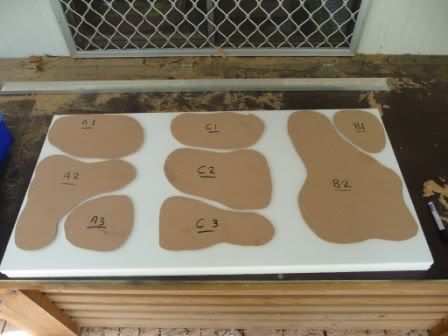
You do need to ID your hills or you will have made the ultimate jigsaw puzzle set.
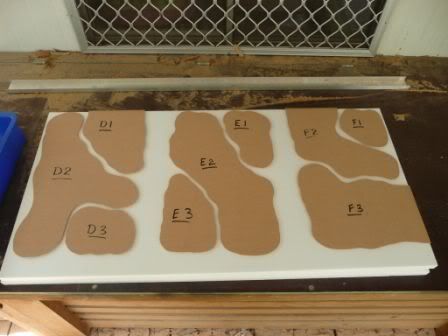
These hills are just made with standard low density foam with some plaster bandage applied to toughen it up. Over this I have given 2 coats of texture paint. I love texture paint as it is quick and easy and coloured for my base coat.
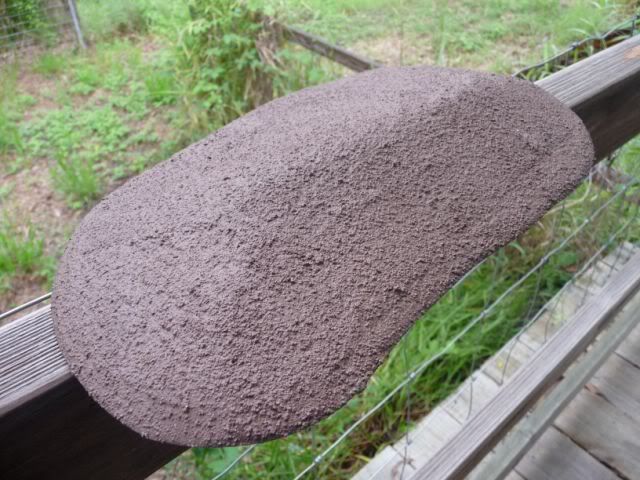
I dry brush 3 colours over the texture paint. 1st is reay a wet brush/over brush and finish with a very light brush of a bone colour. Once again the Whole hills is done just incase the flock rubs off. If it's a desert board just drybrush your choice of clours and your done.
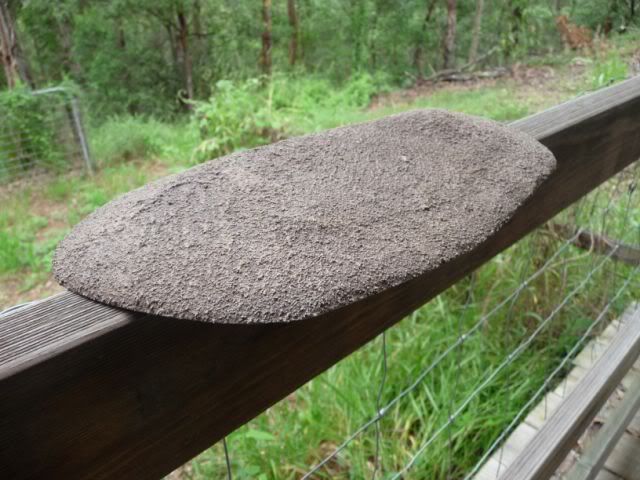
2 coats of paint to seal the MDF on the underside.

Grassed hills. A healthy dose of 50/50 PVA glue and water with a little dishwashing liquide. Start from the crest an work down as it's going to run on you. Leave some bare patches for looks and to give you somewhere to hold it to knock off excess flock. 50/50 glue mix works best as the flock wicks/soaks up the glue and gets a better bond. Pure glue or a thicker mix seem to not bond as well as it skins and the flock dosent bond as well. Strange but true.
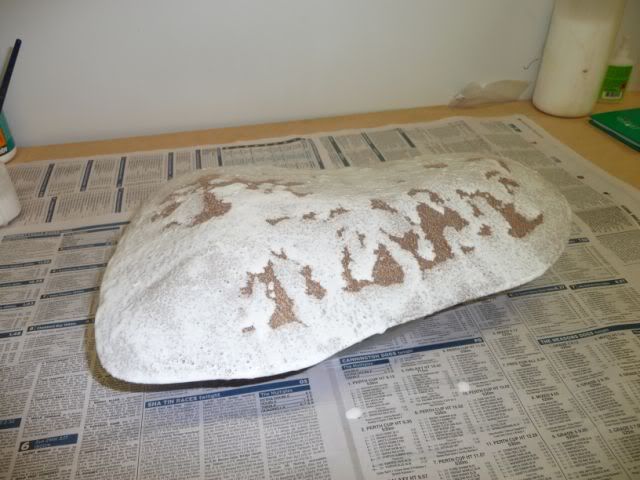
I like the Woodlands Scenic stuff, but I do mix a blend of colours for a better look (not to green not to brown).
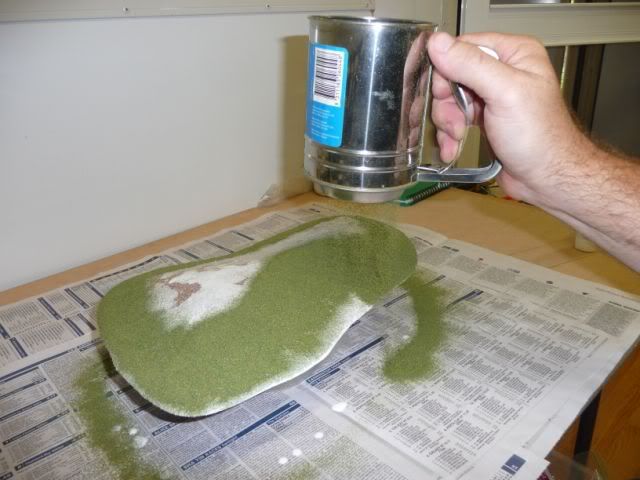
I've picked 2 sets of hills giving 6 for the table. The half hills can go together to create a big ridge or they can go on the edge of the table.
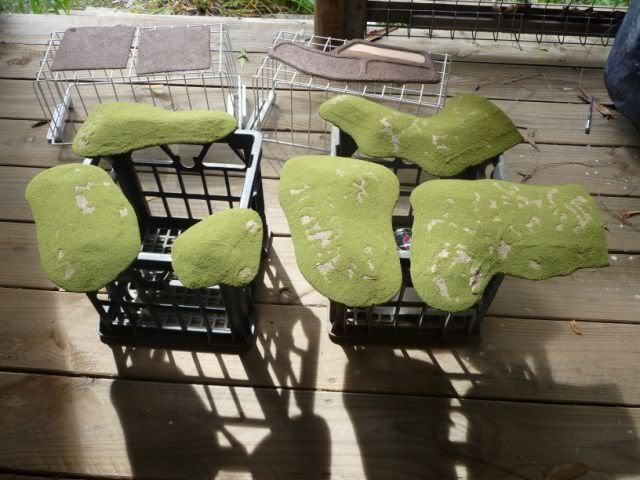
My weapon of choice for appling glue spots for static grass is a little sqeeze bottle. 70/30 Pva and water to stop it spreading out and making the grass clumps to big.

I've used 3 colours of static grass to break the hills up alittle. Some 6mm dark green in large batches, the some scattered green 3mm clumps and just a few 3mm brown clumps on the hill tops to break up all the green.
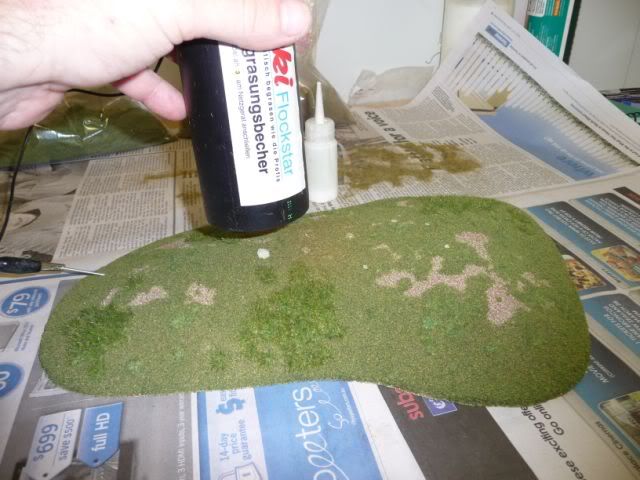
It gives a good effect.

You have to love the grass master
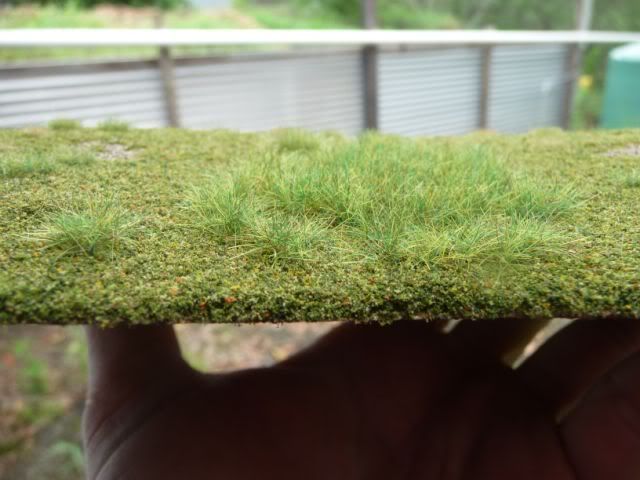
So thats the hills just about done once dry they will get a few coats of matt clear to seal the flock and static grass and help stop any rub off over time. They will give many years of service. I use to have flat areas on the tops of my hills with steaper slopes, but I've moved away from that. I now prefer to make my slopes as shallow as possible and have a clear ridge line in the hills. It helps the minis stay in place and better shows what realy is the crest of the hill.